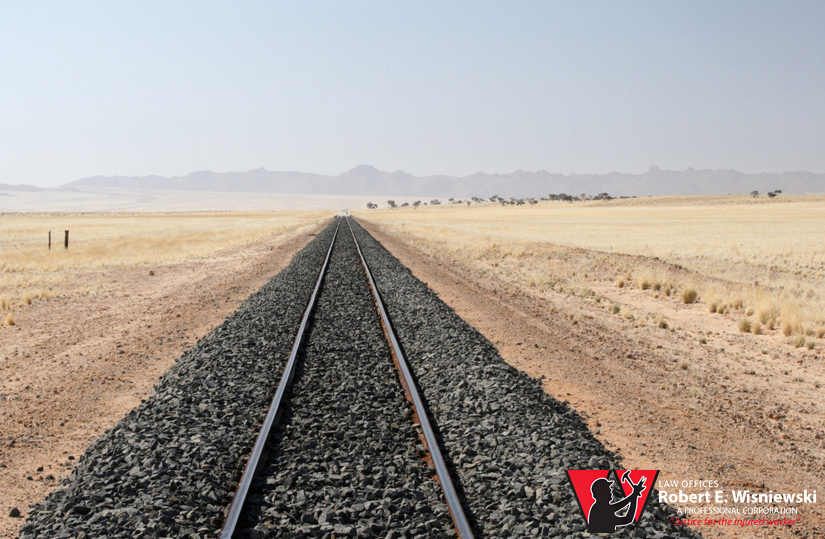Learn how FELA affects Arizona railroad employees’ injury claims
Railroad yards are dangerous places to work. Long shifts, combined with strenuous physical labor and heavy equipment, add to the many risks encountered while on the job working as a railroad worker.
According to the U.S. Bureau of Labor Statistics, in 2018, there were 17 fatal railroad accidents in the country. Data also indicates that approximately 2 out of every 100 railway workers suffer an injury while on the job. Of the 40,900 employees, 819 are injured annually.
In order to better protect railway workers, the federal government established the Federal Employers Liability Act (FELA), which was designed to provide injured workers with appropriate compensation in the event of a work-related accident, injury or illness.
Common railroad workplace injuries
Railroad worker injuries can take many sizes and shapes, but they most commonly involve:
- Back, neck or joint injuries. Heavy lifting and repetitive movements commonly lead to back, neck or joint injuries that occur suddenly or are sustained over a period of time. Slips and falls may also cause injuries.
- Burns. The hot metal surfaces that employees work around present a high risk for suffering a burn. Burns might occur secondary to exposure to chemical solvents, an engine fire, an explosion or a ruptured hose.
- Connective tissue damage. Repetitive movements and heavy lifting may lead to torn ligaments and tendons.
- Crush injuries. Heavy equipment is continually in motion in the rail yard. An employee may suffer crushing injuries as a result of being pinned between heavy cargo or equipment, freight cars or locomotives.
- Disfigurement or limb loss. Burns may cause permanent disfigurement. Crush injuries may necessitate the amputation of 1 or more digits or an entire limb.
- Electrocution. Exposure to high voltage may cause severe burns and tissue damage or lead to a cardiac arrest.
- Fractures. Broken bones remain one of the most commonly suffered injuries. The fracture may occur secondary to falling on a slippery surface or losing one’s balance when walking on precarious surfaces.
- Head injuries. Head injuries may occur from falling cargo, a falling tool or secondary to a fall. The severity of the injuries ranges from lacerations and skull fractures to concussions and traumatic brain injury.
History of FELA
In Arizona, railroad workers must submit a FELA claim when an accident at work causes injury. The state’s workers’ compensation law does not apply to employees working for interstate railroad companies. Thus, FELA became necessary to ensure protection for all.
From 1889 to 1920, using railways for transport increased by 6-fold. But working for railway companies was considered so dangerous that President Harrison compared the hazard to that of a soldier during wartime. Thus, Congress adopted the Federal Employers Liability Act in 1908, which changed the way courts treated railroad workers’ injuries and fatalities.
FELA was created to encourage railroad companies to enhance workplace safety by imposing large monetary awards to injured workers. Employees were then expected to take the measures necessary to ensure worker safety by any means necessary.
FELA applies to all railroad employees working for interstate companies. The coverage also applied to anyone who works on the property, to include employees not typically within close proximity of the trains.
FELA vs. workers’ compensation
The FELA law differs from traditional workers’ comp in a number of significant ways.
For one, FELA claimants must prove that the injury or fatality was the direct result of employer negligence. This differs from workers’ compensation, which is a no-fault system.
FELA lawsuit claims also cover the injured worker or their family for the pain and suffering they endured secondary to the accident, unlike workers’ compensation. In this way, the monetary awards are often much larger than what might be gained by submitting a claim to workers’ compensation.
Proving liability for a FELA claim
Filing a FELA suit and receiving compensation requires that the injured worker or former employee’s family members prove that employer negligence led to the accident. Claims must explain how the employer was negligent by performing an action or failing to perform a required action that led to the accident and injury.
In general, railroad employers and companies are required to:
- Provide as safe a work environment as possible, including supplying employees with safety devices and equipment.
- Routinely inspect all areas of the property to ensure that safety measures are being used and that the environment is free of possible hazards.
- Provide employees and supervisors with the level of training necessary and assistance in order for all to perform the job safely.
- Make sure employees are safe from unintentional or intentional acts of other employees.
- Enforce mandatory safety regulations and rules.
- Prohibit unrealistic or unreasonable work demands to achieve quotas, which may lead to hazards.
Questions and answers about compensation for a job-related accident, injury or illness in Arizona
Arizona railroad worker injuries
Were you hurt on the job while working on the railroad?
Consult with an experienced Arizona workers’ compensation attorney who is knowledgeable concerning the complexities of the railroad industry and the laws designed to protect workers.
At the Law Offices of Robert E. Wisniewski, we are fully aware of the differences between workers’ compensation and FELA requirements. Our attorneys review cases and assist clients with filing lawsuits in order to gain monetary compensation for current and ongoing medical expenses, lost wages, pain, suffering and other losses.




